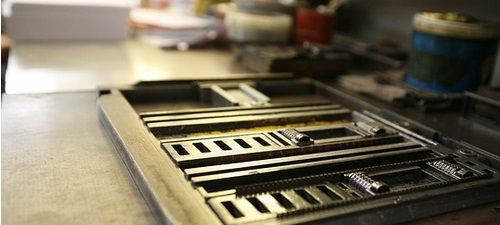
A device is said to be bricked when it can't even access the desktop, gets stuck in an eternal boot loop, or just won't turn on. That is, we are facing a beautiful brick. A very expensive paperweight. Anyway, although a brick it means that the phone or tablet is totally unusable, it does not mean that it cannot be repaired or fixed with a little skill.
In today's post we are going to review12 tips or guidelines to try to fix a bricked Android device. That is, with an irrecoverable software failure. «How to revive an LG that won't turn on?»And answers to other similar questions, below.

Tips for repairing a bricked or unusable phone
What I want to achieve with this article is not to sit a chair, far from it. Each terminal is a world and what works for one device may not work for another. What if I would like is embed these 11 ideas in your brains, since they can practically be considered universal truths.
"I'm not going to tell you how to fix your bricked cell phone, but I will give you a couple of tips that will help you repair it yourself."
Tip # 1: Do a "Hard reset"
When a phone is malfunctioning, the first thing we think about is doing a factory wipe. Although we cannot access the Android settings, we can always try a "hard reset" from the recovery Of the device.
The difference between a hard reset and a factory reset to use is that the hard reset can be performed without loading the operating system - important if the mobile is bricked. You can see more details on how to do a good factory reset from recovery in this POST.
Tip # 2: A bricked phone is (almost) never broken by software: it can always be connected to a PC via USB
Even if the phone reboots in an eternal loop, do not load the recovery menu or even turn on - there is still a solution. Except for a short circuit or failure of any of its hardware components, can always be connected to a PC via USB.

If we install the device drivers on a PC and connect it using a USB cable, our equipment is able to identify and communicate with it. Even if the phone is off and without battery.
Tip # 3: ADB and Fastboot commands for your bricked phone
The ADB and Fastboot commands allow us communicate with our Android directly from the PC. For this, it is necessary that we have the ADB and Fastboot packages installed.
This is very useful if we can't get into the recovery to do a factory reset. For example, using the command «adb reboot-recovery»We can restart the phone and load the recovery mode directly -from where we can do the hard reset-.
We can also use the command «adb reboot-bootloader»To restart the mobile and load the device's bootloader menu.
Related:Basic guide to ADB commands for Android
Note: If we are advanced users and we are not afraid to "wet our hands" we can also use fastboot. A more powerful tool than ADB that allows us to flash partitions, recoveries, boot and other deep-seated actions.
Tip # 4: Smart Phone Flash Tool + ROM of your terminal
If the problem is really serious and cannot be solved with a hard reset, then it is advisable to flash the terminal.This is something that can be done using fastboot commands. Luckily, there are also flashing tools that do this job for us.
It is what is known as a Smart Phone Flash Tool, and each device has its corresponding flashing program for PC. For example, Samsungs use Odin, terminals with Mediatek processors use SP Flash Tool, HTC uses Windroid, etc.
Once we have the corresponding flashing application we only need to find one stock ROM, an image of the operating system of our Android terminal.

Once we have the ROM, we will use the flashing program to copy the ROM in our terminal and thus have a totally clean and 100% operational device. Like the first day.
This is the standard procedure for recovering any phone, no matter how bricked it is.
Then I leave you a LINK where the operation of the most common flashing tools is explained.
Tip # 5: Flash a new ROM with ADB Sideload
If we have a custom recovery installed on our Android we can take advantage of it in our favor. Custom recoverys like TWRP allow us to flash ROMs or factory images of our Android.
With ADB Sideload, we can flash a ROM from the PC by entering a single command in MS-DOS. You can see all the steps in detail in this tutorial on how to install an Android ROM with ADB Sideload.

Tip # 6: Let the battery drain completely
When a terminal has an irreparable software failure, many times we won't even get the flashing tool to detect or work properly with our terminal.
To solve this the best thing is let the battery drain completely.
With a completely drained battery, our Flash tool is more likely to be able to do its job.
Be careful, sometimes a device can take days to download completely.
Tip # 7: Emergency Start by Button Combination
Believe it or not, many terminals tend to have an emergency ignition. That is, a combination of buttons that if executed correctly can allow us to turn on the phone.
What is that button combination?
The exact combination depends on each manufacturer and terminal, so here I can help you little. What I can tell you is that in my case, in a situation in which the terminal was totally dead, I managed to turn it on by pressing all the buttons simultaneously for about 5 seconds.
Other possible combinations can be:
- Volume up + Power
- Volume Down + Power Button
- Volume Up + Power + Home Button
Tip # 8: Hardware failure?
As I mentioned at the beginning, these are solutions for terminals with software failure, if the terminal has suffered a severe blow or short circuit, it is best that you take it to the technical service.
In the event of a breakdown due to falling into the water, my recommendation is put it in a bag with a little rice for a few hours / days to absorb moisture. Although it does not always work, many times we can turn on the terminal at least to try to recover the data stored in it.
Tip # 9: USB Jig for hard bricks
One of the last recovery options, especially if we are faced with what is known as a «hard brick»Or unrecoverable failure in which the phone does not even turn on, is to buy a USB Jig.

The USB Jig is a device that connects to the USB input and activate download mode from the terminal. In this way it allows us to reinstall the stock firmware of the device.
It is a gadget that can be found at a very good price in stores such as Amazon or Ebay. The bad news is that it does not work on all devices and does not offer any guarantee of use, so normally, in these cases it is usually best to take it to the store for repair.
Tip # 10: Broken screen?
If the problem is that the screen of our phone or tablet is broken, we must assess whether it is worth repairing it or not. If the corner store is going to charge us 70 or 80 euros, maybe it will be more convenient to buy a new mobile.
Personally, I do not recommend doing the repair yourself, as it is a very delicate process. In this interesting video we can see how to repair a broken screen step by step by a true professional:
Tip # 11: Battery problem?
Finally, if you think that your smartphone does not turn on and that the problem may be in the battery, do not hesitate to take a look at this interesting post with 4 practical tricks to revive a bad smartphone battery.
Tip # 12: Is the power button broken?
If the power button is faulty or has broken due to a blow and we cannot turn on the terminal there are several options that we can try. The idea is to turn on the Android phone and once this objective has been achieved, change the power function to another physical button (such as one of the volume buttons).
- Turn on the phone: To start the terminal we can do it either using ADB commands (connecting the terminal to a PC and launching the "adb reboot" command) or connecting the terminal to the battery (some mobiles start automatically when the charger is connected to the USB port).
- Assign the on / off function to another button: For this we can use an app like Power Button to Volume Button(which does exactly that, assign the power button to the volume button) or Gravity Screen, another app that allows us to turn the screen on and off through the use of gestures.

 Download QR-Code Power Button to Volume Button Developer: TeliApp Price: Free
Download QR-Code Power Button to Volume Button Developer: TeliApp Price: Free 
 Download QR-Code Gravity Screen - On / Off Developer: Plexnor Price: Free
Download QR-Code Gravity Screen - On / Off Developer: Plexnor Price: Free To finish, I also leave you the corresponding video that I uploaded to YouTube, commenting on these same tips:
What do you think? Do you know any other method to recover from a brick?
You have Telegram installed? Receive the best post of each day on our channel. Or if you prefer, find out everything from our Facebook page.
